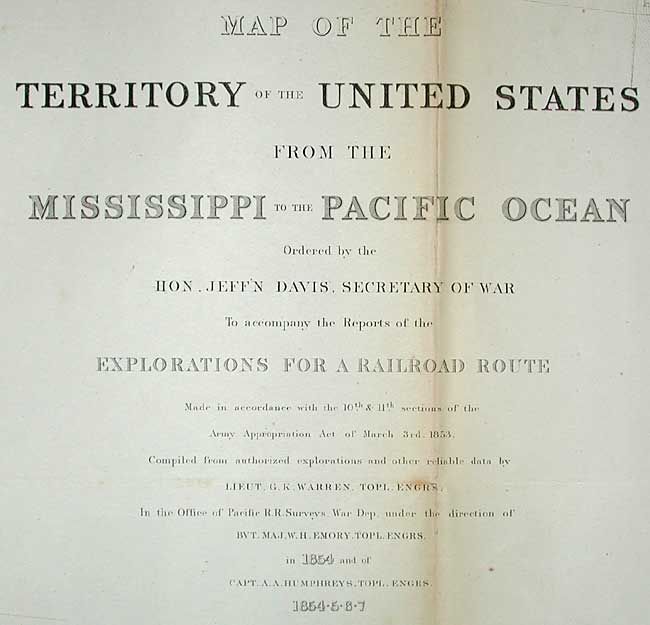Catalog Archive


Auction 106, Lot 152
"Map of the Territory of the United States from the Mississippi to the Pacific Ocean", Warren, Lieut. G. K.
Subject: United States - Western
Period: 1854-7 (dated)
Publication: U.S. Pacific Railroad Surveys
Color: Black & White
Size:
46 x 42.4 inches
116.8 x 107.7 cm
Download High Resolution Image
(or just click on image to launch the Zoom viewer)
(or just click on image to launch the Zoom viewer)




